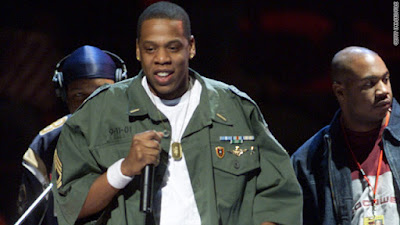I was inspired by a podcast called The 500 hosted by Los Angeles-based comedian Josh Adam Meyers. His goal, and mine, is to explore Rolling Stone Magazine's 2012 edition of The 500 Greatest Albums of All Time.
Album: #250
Album Title: Reasonable Doubt
Artist: Jay-Z
Genre: Mafiosa Rap, East Coast Hip Hop
Recorded: D&D Studios, New York City, USA
Released: June, 1996
My age at release: 30
How familiar was I with it before this week: Not at all
Song I am putting on my Spotify Playlist: Reasonable Doubt
Was I biting off more than I could chew?
Would I get 40 records into the project and sputter?
Would life get too busy for me to maintain a weekly pace?
Now I am feeling much more optimistic since officially making it to the halfway point with this week’s presentation. It's been a terrific experience so far and I am meeting the goals I set out for myself:
- Write weekly: This blog began with a focus on education; however, weekly topics were often elusive. But The 500 allowed me to evolve and innovate by providing a launching point to intertwine the evolution of music albums and, when it fit, classroom teaching.
- If you teach it, do it: I try to inspire my love of learning with my students. More than anything, I want them to be critical thinkers who are life-long learners. I teach writing, so I write. I'm also learning piano and Spanish while staying active in sports. Education truly is a life-long experience.
- Explore Diverse Music Genres: It is easy to get stagnant with one's music tastes. By the time we hit our 40s, we have "aged-out" of popular music trends and tend to listen to tried and true favourites over and over again. I wanted to shake up my listening habits and the journey through The 500 has diversified my audio choices while expanding my knowledge and appreciation of music.
 |
| Album Cover for Raekwon's Only Built 4 Cuban Links |
On Reasonable Doubt, Jay-Z weaves a tale that straddles both worlds. It is full of clever, double-entendres and contrasts the glamorous lifestyle of crime kingpins to the toll wreaked on the inner-peace and mental health of those who emulate them. Music critic Steve Huey summarized the record brilliantly by saying:
Jay-Z is cocky bordering on arrogant, but playful and witty, and exudes an effortless, unaffected cool throughout. And even if he's rapping about rising to the top instead of being there, his material obsessions are already apparent. The album demonstrates his extraordinary talent as a pure freestyle rapper, but also preaches a subtle message...'bad behavior gets in the way of making money.' Perhaps that's why Jay-Z waxes reflective, not enthusiastic, about the darker side of the streets."
Jay-Z reportedly called the record Reasonable Doubt because he recognized the risk he was taking on his first solo project. He knew that any artistic endeavor draws criticism and judgment. He also knew that many of his rhymes were bold, boastful and even arrogant.
His doubts were quickly assuaged and, over the past 28 years, he has built an empire, securing a lavish lifestyle without participating in crime. He and his wife, Beyonce, have a combined worth of $2.5 Billion, not bad for a kid who was raised by a single mother in the tough Bedford-Stuyvesant housing projects in Brooklyn where gangster life was a reality.
 |
| Jay-Z and his wife of 15 years, Beyonce |




.jpg)



.jpg)






.jpg)

















